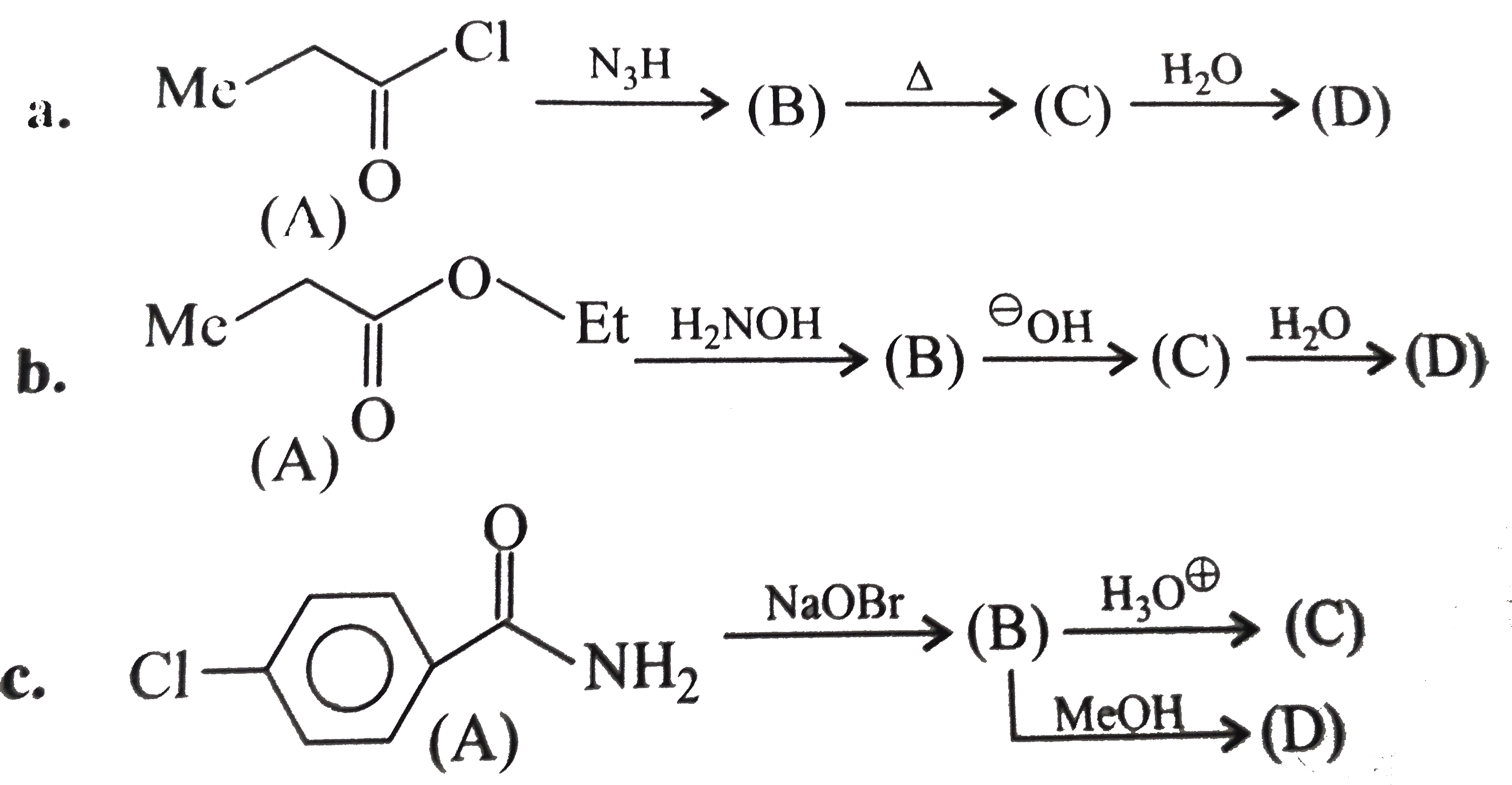Under the specified conditions, substrate X undergoes substitution and elimination reactions to give products A-D. A and Bare stereoisomers, but not enantiomers. C and D are enantiomers. A is notanisomer of C. Which of the following could be the starting material X?
 Solution in Telugu
Solution in Telugu
(I)
(II)
(III)
(IV)
The correct Answer is:C
Topper's Solved these Questions
- 5C ALKYL HALIDES BOOK - MS CHOUHANCHAPTER - 5C ALKYL HALIDES EXERCISE - LEVEL-2
3 Videos
- 5C ALKYL HALIDES BOOK - MS CHOUHANCHAPTER - 5C ALKYL HALIDES EXERCISE - LEVEL-2 (SUBJECTIVE PROBLEMS)
1 Videos
- ALCOHOL,ETHERS AND EPOXIDESBOOK - MS CHOUHANCHAPTER - ALCOHOL,ETHERS AND EPOXIDESEXERCISE - SUBJECTIVE PROBLEMS
1 Videos
Similar Questions
The following organic halide derivatives (A to J) are reacted in ethanol solution with each of the nucleophiles : acetate, methylthiolate, cyanide and hydroxide anions. Six possible results from these combinations of reactants are designated (1) through (6) below:
Write the number corresponding to your best estimate of the outcome ofeach reaction in the appropriate answer box below.

View Solution
X = Total number of substitution and elimination product(s). Find the value of X.
View Solution
Maximum number of moles of Ac2O consumed by reactant (A) is :
View SolutionComplete the following reaction :
(a)
(b)
( c)
(d)
( e)
(f) PhCHON3H/H⊕−−−−−→Δ(B)H3O⊕−−−→(C)+(D)
(g)
View SolutionUnder the specifed condition s ,subastan e X undergoes subition ans elimination eaction sto give products A-D ,Aand B stererisomers ,bu not enantiomers C and D are to enantiomers A is not an isomer of C which ofhte following could be the starting material X?
View Solution(x−a)(x−b)(x−c)(x−d)=Ax−c−Bx−d+C⇒C=
View SolutionCH3COOHAgOH−−−−−→Br2[A]AgCN [B] HOH−−→ [ C] + [D], in reaction [C] & [D] are
View SolutionCH3COOHAgOH−−−−−→Br2[A]AgCN [B] HOH−−→ [ C] + [D], in reaction [C] & [D] are
View SolutionIdentify organic compounds [A, B, C, D]: CH_3CH_2COOH overset(লাল P //I_2)rarr A overset(KCN)rarr B underset(H_2O,Delta)overset(H^oplus)rarr C underset(Delta)overset(150-200^@C)rarr D
View Solutionউপযুক্ত বিকারক [A,B,C,D,E] উল্লেখ করো: HCHOA−−→CH3OHB−−→CH3BrC−−→CH3CN(i)D−−−→(ii)ECH3CHO
View Solutionअभिक्रिया CH3ClKCN−−→(A)H2O−−→(B)NH3−−→(C)Δ−−→(D) में उत्पाद D है
View Solutionमाना △(x)=∣∣ ∣∣x+ax+bx+a−cx+bx+cx−1x+cx+dx−b+d∣∣ ∣∣ तथा 2∫0△(x)dx=−16 जहाँ a,b,c,d समांतर श्रेणी में हो तब समान्तर श्रेणी का सार्व अंतर है
View Solutionनिम्न अभिक्रियाओं का अन्तिम उत्पाद .D. की पहचान कीजिए।
Na2CO3SO2−−→ANa2CO3−−−−→B−S(तत्व)−−−−−−→ΔCI2−−→D
View SolutionIdentify A, B, C, D.
CH3INa−−→EtherACl2−−→hvBAq.NaOH−−−−−→C170∘C−−−−−−−→Conc.H2SO4D
View SolutionIdentify A, B, C, D. CH_2 = CH_2 overset (O_3)(rarr) A overset(Zn//H_2O) (rarr) B overset (K_2Cr_2O_7)underset(+conc H_2SO_4)(rarr) C underset(LiAIH_4) (rarr)D
View SolutionTwo different G.R.(A) and (B) give the product (X)
 on reaction with (C) and (D) respectively. Give the structures of (A),(B),(C) and (D).
on reaction with (C) and (D) respectively. Give the structures of (A),(B),(C) and (D).
View Solution

